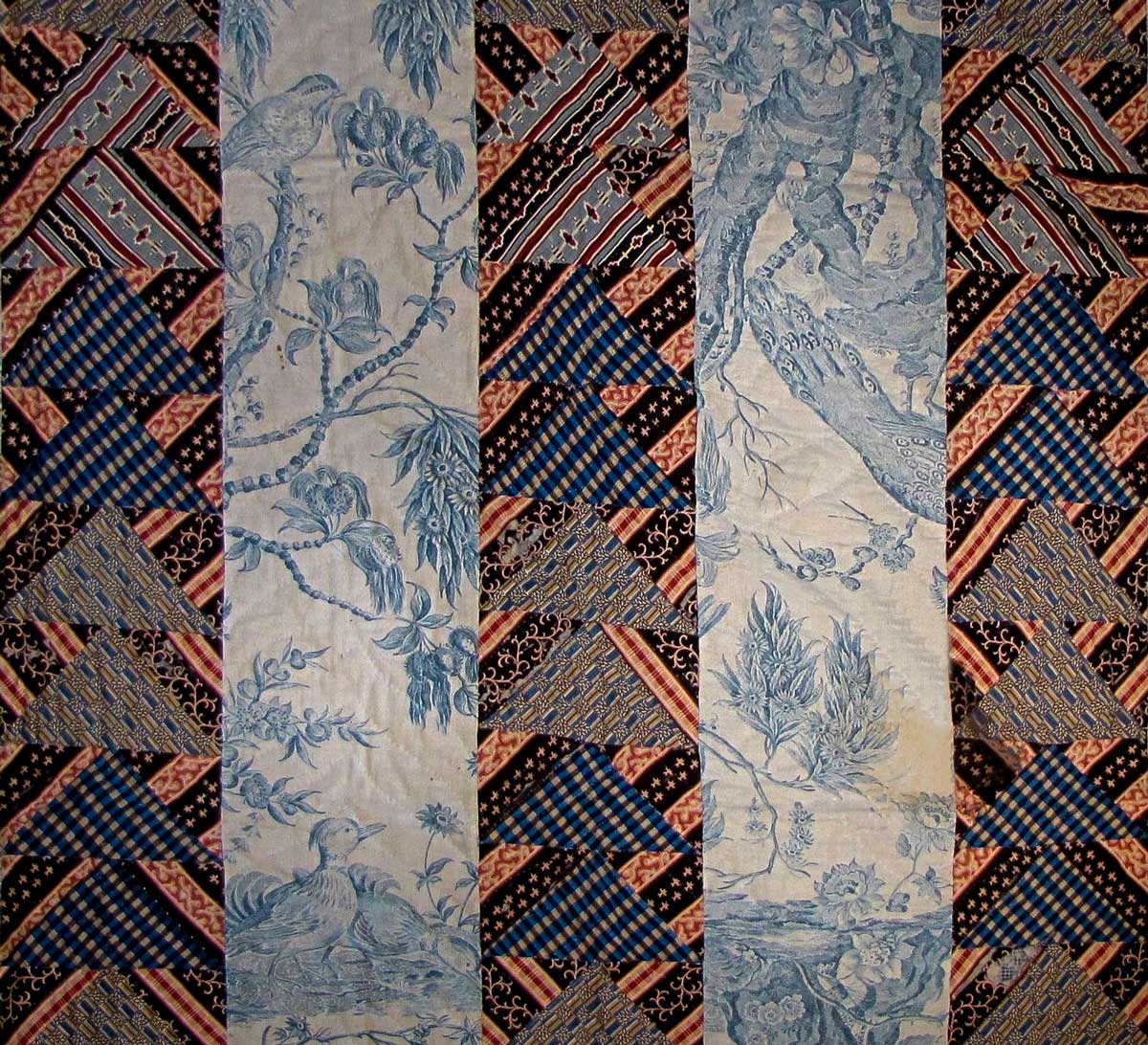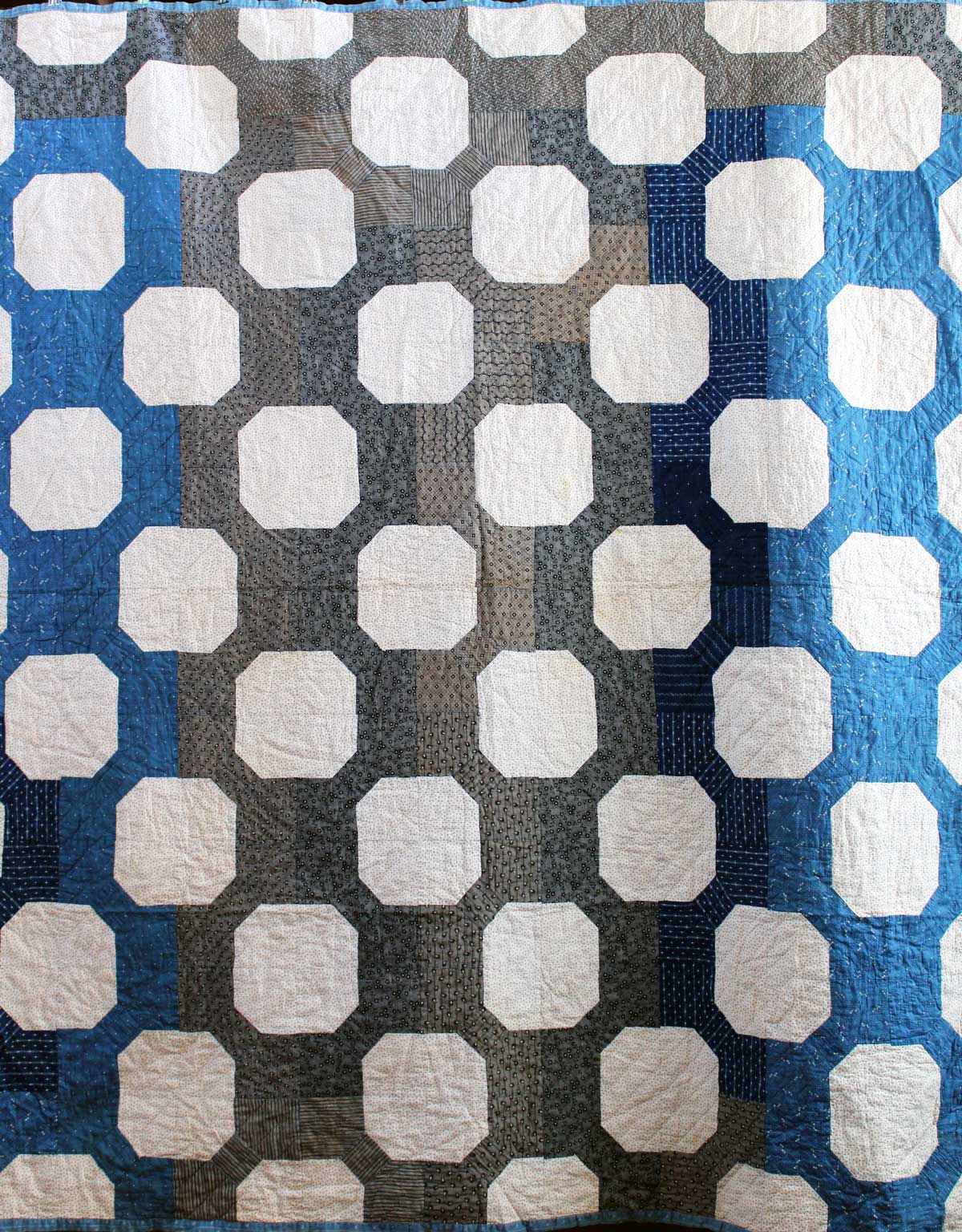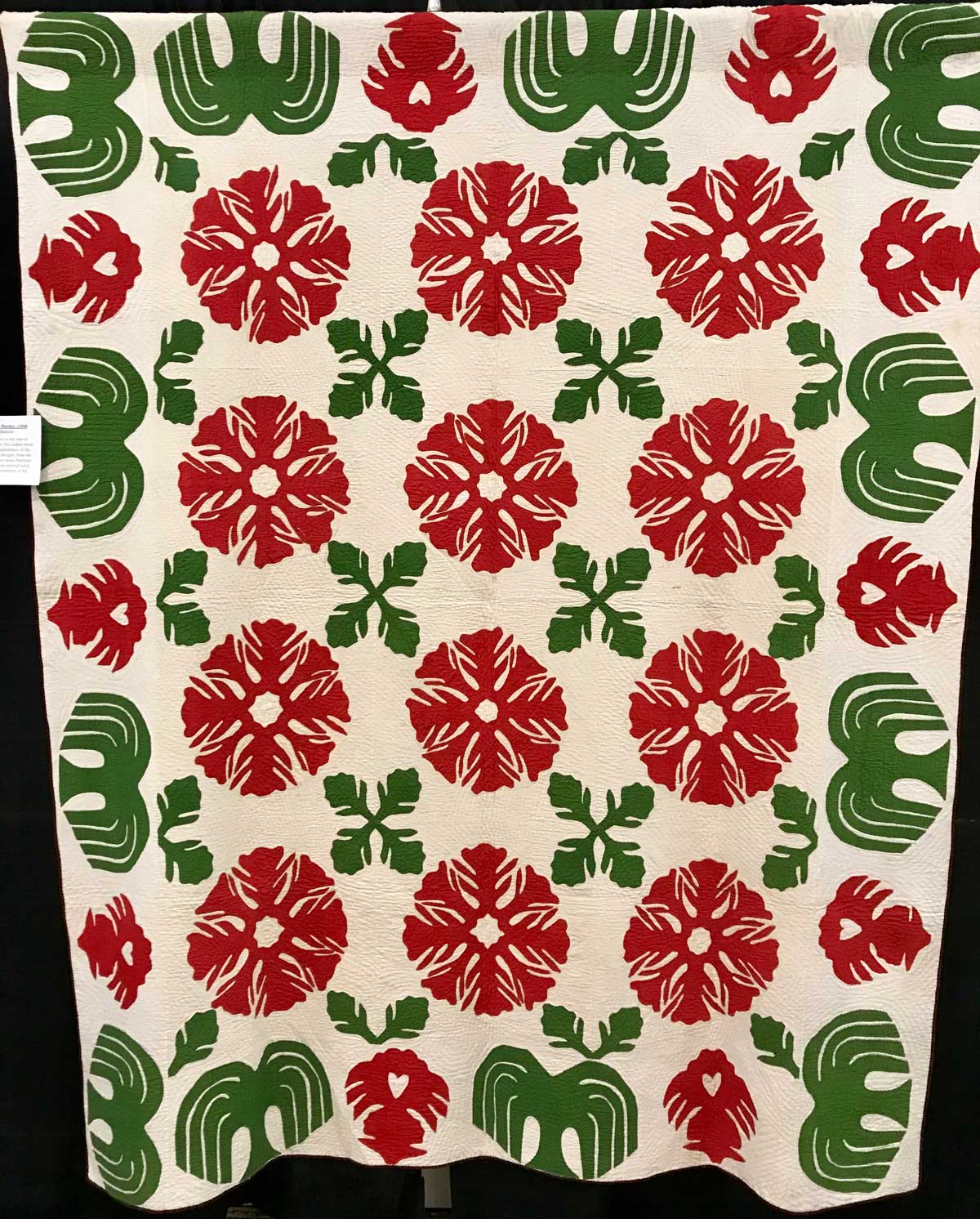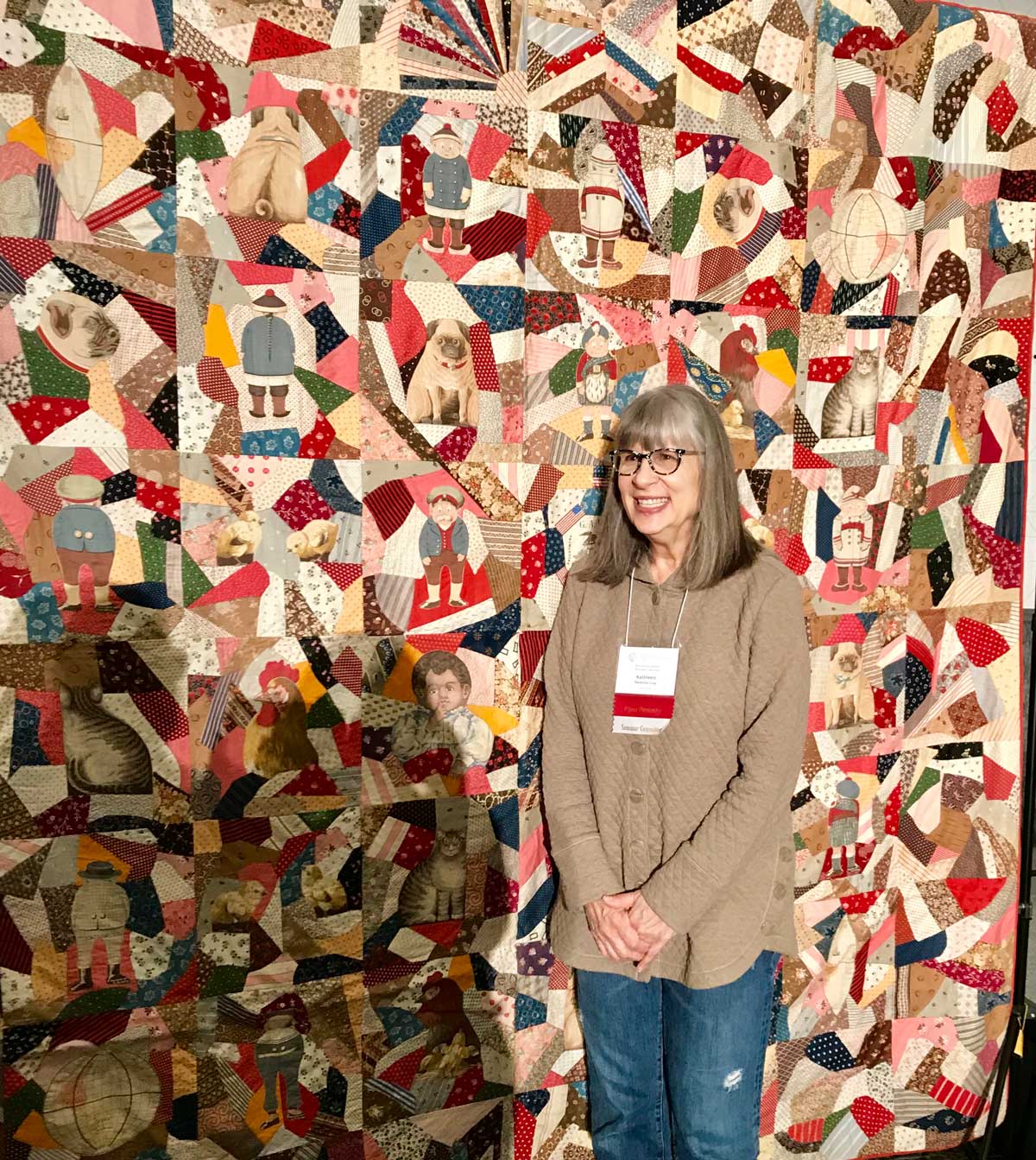Spool Pets – Meet Clara Cow
June 2025
Covering Quilts
Spool Pets – Meet Clara Cow
by Sandra Starley
Quilters cannot sew without thread and other sewing notions, and most have collections of sewing supplies. You never know what you may find in that box of vintage lace, rickrack, and bias tape. I belong to several antique and vintage quilting, sewing, and sewing tools Facebook groups and have seen photos of charming spool animals. A bit of context, the Spool Pets are small advertising cards with an animal printed on them (see photo). They are designed to be cut out and glued onto a thread spool for a cute toy.
Recently, I was scrolling and read more about the Spool Pets. I learned that the cards were in bias binding packages but hidden in the center of the package with yards of bias trim around them. I went to see if there was a spool toy cached away in the sewing box. Imagine my surprise and sheer delight when I discovered my own spool animal – Clara Cow – quietly biding her time for nearly 100 years (copyright 1935) in an old binding package. What a find! Now another quest – learning the story of the Spool Pets.
Effective and adorable advertising
Spool Pets from J. & P. Coats were the brainchild of famed adman G. Lynn Sumner. In another stroke of luck, I discovered he detailed their creation in his popular book: How I Learned the Secrets of Success in Advertising (1952) see Google Books. Sumner’s agency represented The Spool Cotton Co., distributors of J. & P. Coats and Clarks ONT (Coats and Clark). The chapter aptly stated the Company’s goal: “Getting More Spools of Thread into the Sewing Bas-ket.” The Spool Co. had 10 different thread sizes (from a thick size 8 to the finest size 200) designed for various fabrics and tasks but most women bought 50 weight as an all-purpose thread especially during the Depression. The agency created informative Thread Charts but still wanted an “interesting, dramatic way” to illustrate the importance of picking the right size thread for the task.
Inspiration at the Toy Store
Sumner saw a simple, fun toy animal with a block body and “the head and front legs and the tail and hind legs two flat pieces mounted at front and rear.” Kismet – a spool toy with different size spools for various animals. “A kitten made with a tiny size 200 spool! A fine fat cow with a size 8 spool!” Spool Pets were born.
The initial set featured six different farm animals: Kitty Kat, Hal Horse, Pete Pig, Clara Cow, Puppy Dog, and Bob Bunny, with a simple drawing, animal poem, and instructions for making the animal using the right size spool. They then turned to children’s author and poet, John Martin, who improved the poetry and made the cards more decorative and appealing to little ones.
A great example of indirect selling, the cards were marketed to children. Sumner noted, “the child, in its persuasive way, is a powerful little sales agent,” and once they had the cards, they would be “after mother for spools to make the toy.” The cards and their advertising material had the thread information to sell her more spools and it was a very successful campaign.
There was also a second collection: the Spool Zoo with Teddy Bear, Jim Fox, Old Hippo, Elephant, Zebra, and Lion. Join in on the hunt, the Spool Pets are waiting for you!
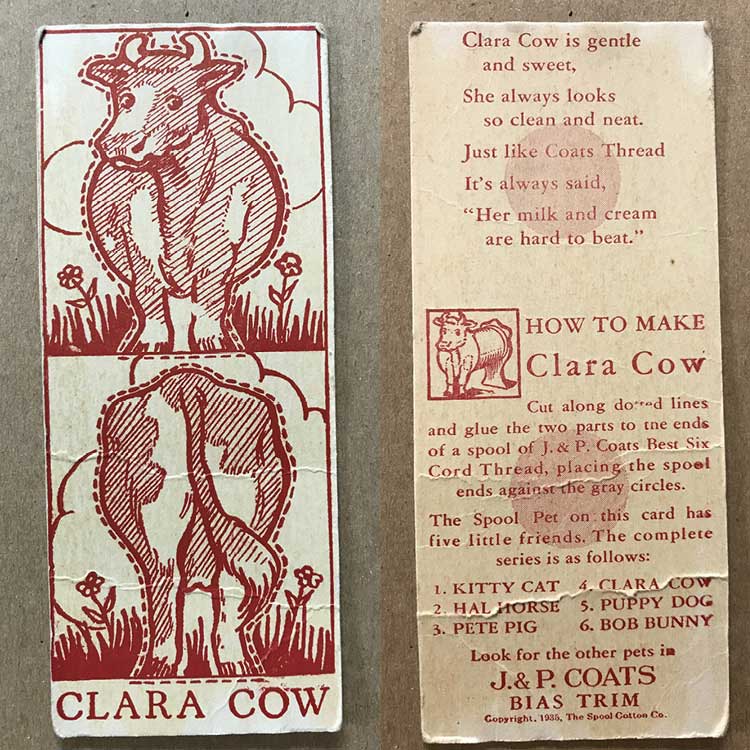
Meet Clara Cow, one of the Spool Pets who make the ideal helper for your sewing project. A clever advertisement and play toy found in Mom’s sewing basket. Front and back of Clara Cow, Spool Pet from J. & P. Coats, © 1935, 2 1/2” x 5” (images courtesy of the author)
Sandra Starley is nationally certified quilt appraiser, quilt historian, and avid antique quilt collector. She travels throughout the U.S. presenting talks on antique quilt history, fabric dating classes and trunk shows as well as quilting classes. Learn more at utahquiltappraiser.blogspot.com. Send your comments and quilt questions to SandraStarley@outlook.com


